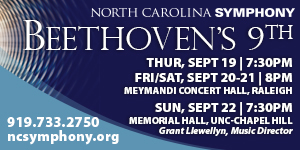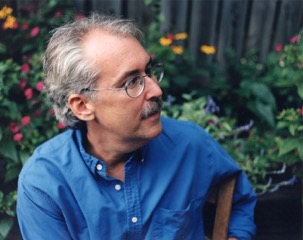For their second concert of the academic year, the UNC Symphony Orchestra under the exceptional leadership of Tonu Kalam, was joined by cellist Brent Wissick in a program of two sharply contrasting works: the first by Benjamin Britten inspired by the artistry of Mstislav Rostropovich and the second by the master of melody Pyotr Ilyich Tchaikovsky.
Introducing the concert, Maestro Kalam informed the audience that it has been a long-time ambition of Wissick to perform Britten’s extremely challenging Symphony for Cello and Orchestra, Op. 68 and they decided about a year and a half ago to program it at this time. Yes, it is cast as a symphony and not a concerto. It is in four movements. in generally sonata-allegro form, and the cello interacts with the orchestra quite differently from the way it typically does in a concerto.
This is not pretty music. It is edgy, sometimes disjointed, dissonant, with no catchy tunes you might whistle on the way home from the concert. This is the kind of art that confronts the listener with things he/she would rather avoid but needs to deal with. The Cello Symphony was written in 1963, the year following the premier of Britten’s anti-war monumental War Requiem. Some of the music in the first movement seemed to flow out of that emotional context. I saw visions of the allies wanton bombing of civilian targets at the end of WW II. The music sounded like broken stone, shattered glass, rubble, both structural and human everywhere. There was a passage near the end of the first movement which was reminiscent of the music in Britten’s Billy Budd where Captain Vere is trying to come to grips with the unavoidable and dreaded necessity of sentencing Billy to death. This is not programmatic music and I know better than to assign a program or message to it. This is simply how this reviewer experienced it: powerful, moving, almost overwhelming.
The Cello Symphony has been described by many as being a broad arch from darkness to light. The second movement is marked “Presto inquieto” and is a sardonic dance/march in 3/8 time somewhat in the style of similar movements by Shostakovich. The third movement does have some achingly beautiful passages for the solo cello but continues in the dark, deep vein of self-examination. Gradually, almost unperceptively, elements of light creep in. But even with the bright D major resolution that ends the piece, the light is not accompanied with joy or even full confidence. I felt this to be a disturbing piece, a work we need to hear. We also should express deep appreciation to Wissick and Kalam for realizing it so effectively and powerfully.
The orchestra was at its best in this sometimes chaotic, unpredictable and rhythmically complex score. Wissick put himself totally into the music; no smoothing of the rough edges composed for “Slava.” He tackled the broad range of technical challenges, his fingers flying and stretching all over the fingerboard. He must have experienced both exhaustion and exhilaration at the end.
Tchaikovsky’s Suite from Swan Lake, Op. 20 is a completely different story. Tchaikovsky was unquestionably a masterful fount of melody, but there was much more. His orchestrations are always supportive and effective. His ability to capture the action and the mood of the story was phenomenal. In his time, his ballets set the benchmark, his symphonies were the equal of any composer, and his operas were in some ways the crown of his achievements. In whatever form he wrote he was an accomplished and meticulous master.
Swan Lake was composed 1875-76 and premiered at the Bolshoi in 1877. It falls between the second and the third symphonies and just before the B minor piano concerto, the string quartet and the opera, Eugene Onegin. Different versions of the ballet and different versions of the suite have developed over the years. The suite performed by the UNCSO on this occasion ended with the Finale from the ballet after the Mazurka, which is the usual concluding selection.
Here the orchestra had the opportunity to shimmer and shine with Tchaikovsky’s romantically effusive music. Excellent musicianship was heard throughout. The tender “Scene” was especially graced by the solo work of harpist Laura Smithburg Byrne, concertmaster violinist Christin Danchi and principal cellist Audrey Cook. The trumpet solo in the “Neapolitan Dance” was beautifully done by John Parker, and the oboe solo by Kiran Bhardwaj in the “Finale” was spritely and effective. It was a joyful, rapturous performance that thrilled the audience.
I have to admit that I am a fan of the UNC Symphony Orchestra and Tonu Kalam. They do not shy away from weighty challenges and they play with refinement and musicality whether playing familiar classics or challenging, seldom-heard repertoire. Hear them when you can.













